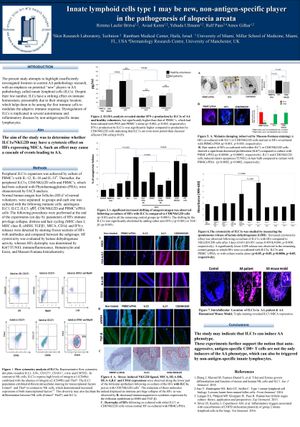Innate Lymphoid Cells Type 1 May Be New, Non-Antigen-Specific Player in the Pathogenesis of Alopecia Areata
August 2019

TLDR Innate lymphoid cells type 1 may contribute to alopecia areata by damaging hair follicles.
The study explored the role of innate lymphoid cells type 1 (ILC1s) in the pathogenesis of alopecia areata (AA), suggesting that these cells might be new, non-antigen-specific contributors to the disease. Despite their low numbers, ILC1s were found to have a significant impact on immune homeostasis and could induce AA by affecting hair follicle (HF) immune privilege and causing HF dystrophy. The research demonstrated that ILC1s had a more potent cytotoxic effect on HFs compared to classical effector CD8/NKG2D cells, as evidenced by increased lactate dehydrogenase release and decreased proliferation in HF cultures. These findings indicated that ILC1s could trigger the AA phenotype, challenging the previous understanding that only antigen-specific CD8+ T cells were responsible for the condition.